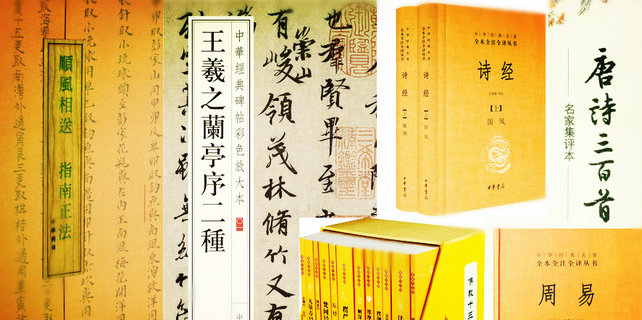Growth designs
Textile factories part of Senegal's plan to woo Chinese investors, generate jobs for youths
Clothes labeled "made in Senegal will soon be on sale in European stores if plans in the pipeline are a success. Four Chinese companies are planning to set up operations in a new industrial zone about 40 kilometers east of the capital, Dakar, following a series of government-led initiatives to woo Chinese investment.
Among the companies that have announced their intention to take part in the $140 million project is C&H, which plans to invest $25 million to build a textile manufacturing plant. It plans to start production by January and already has operations in Ethiopia, Kenya and Rwanda. Co-founder Helen Hai is currently an adviser to the governments of Ethiopia, Rwanda and Senegal on investment and industrialization projects.
The flurry of industrial development across Africa is seen as proof that governments are listening as they strive to generate jobs for the millions of young people who make up 70 percent of the continent's population. As well as attracting businesses relocating from China to escape increasing salary costs, Africa's development blueprint lays emphasis on the need to build manufacturing industries, as opposed to relying on the traditional commodity markets.

|
THE DAKAR INTEGRATED SPECIAL ECONOMIC ZONE will host state ministries, universities, research centers, hospitality and sporting facilities and the new Diamniadio city. Lucy Morangi / China Daily |
It is now apparent that the commodity boom that fueled Africa's economic growth, which averaged 6 percent for decades, was not inclusive or sustainable. Countries that have diversified their economies - such as Kenya, Cote d'Ivoire and Tanzania - are still experiencing steady growth, while commodity-dependent economies such as Nigeria, South Africa and Angola have cooled down.
According to the African Development Bank, persistent lack of industrialization is holding back Africa's economies, which remain largely dependent on raw commodity exports.
"On average, industry generates merely $700 of GDP per capita in Africa, less than a third of Latin America's output ($2,500 per capita) and barely a fifth of East Asia's ($3,400 per capita). Industrial GDP influences overall GDP, as industrial productivity drives productivity in other sectors," says the bank in its High Five initiative.
The recent past has seen Ethiopia emerging as Africa's front runner. While emulating Chinese industrial success, the East African country has engaged in extensive infrastructure and industrial park development in its second five-year growth and transformation plan. This has seen an upsurge in Chinese investments. Around 20 Chinese companies have established themselves, creating more than 8,000 jobs.
Senegal hopes to replicate this success. With the launch of its development blueprint, known as Emerging Senegal Plan, it is financing a series of large scale flagship projects, and among them is the special economic zone. Accessed via the Dakar-Diamniadio toll highway, the Dakar Integrated Special Economic Zone covers a total of 776 hectares and will host state ministries, universities, research centers, hospitality and sporting facilities and the new Diamniadio city. It adjoins the new Blaise Diagne International Airport about 30 minutes away.
The urban center, planned to be green and smart, will decongest the busy, narrow Dakar streets and create homes for the burgeoning middle class.
The four textile factories from China are stirring interest among locals. Ousmane Kamara, a tailor in the downtown area of Yoff Mbenguene in Dakar, is excited at the prospect of having a textile factory set up in Senegal. His shop, which employs three young men, is sustained by a population that prefers locally tailored clothes, using African fabrics, over conventional secondhand clothes from North America and Europe. He believes his business will experience a boom once a textile and apparel factory is set up locally.
"I think more people will love our traditional clothes," says Kamara, referring to the wax print fabric that is popular in sub-Saharan Africa because of the vibrant colors primarily associated with tribal patterns. "Currently, we buy six yards (5.5 meters) of Chinese imported cloth at CFA 6,000 ($10) from le March�� H.L.M. I think the price will fall once these factories are here."
Trade between China and Senegal has boomed over the last decade. In 2005, it reached $2.32 billion, according to the government, competing strongly with other traditional development partners. China is among the top five foreign investors in Senegal and ranks first among Asian countries. It has invested in infrastructure expansion, with the biggest road project - the Ila Touba Highway, which costs $812 million and links Dakar to Touba - financed by China. Senegal's government wants to redirect China's investment into its fledgling industrial sector.
"We know they are coming, as they pursue strategies to shed some low-end manufacturing," says Aly Ngouille Ndiaye, Senegal's minister of mines and industry.
The West African country is well positioned to benefit from an export-oriented sector. It is only four hours away from Europe and its Atlantic port, backed by a relatively stable government, makes it quite attractive to Chinese investors, who have previously invested in traditional industries such as mining and infrastructure. However, it ranks 147 out of 190 countries on the World Bank's ease of doing business index due to challenges with electricity supply and bureaucracy.

Senegal is, however, determined to bag Chinese businesses in a brutally competitive landscape that has East African countries such as Kenya, Tanzania and Rwanda - together with East Asian countries such as Vietnam - vying for the same opportunities.
"We are already working with Chinese firms in developing the first phase of the industrial park ... (and) we look forward to enhancing our current collaboration and have forwarded a proposal for them to finance the second phase. We are waiting for their feedback," says Ndiaye.
If China agrees to enter into the partnership, the minister says it will not only unlock the potential of this West African country but will also generate much-needed jobs for the growing youth population.
"With industries we have jobs and that is what this government is working toward," says the minister, adding that there is much to look forward to in this collaboration, such as technology transfer and capacity building. "We are also looking forward to collaborating with them in the agri-processing sector."
This will not be difficult. Last year, Senegal, the seventh-largest peanut exporter in the world, saw its farmers' income increase because of Chinese demand. Although China itself is a major producer, it imports Senegalese peanuts to make oil to meet the growing demand of a health-conscious population. With production set to increase, the government is working toward making the West African nation an emerging economy by 2020.
"Senegal has created basic infrastructure, such as roads and power, making it accessible to investors," says Baye Elimane Gueye, head of the investment monitoring department at APIX, an investment promotion and major projects agency in Dakar.
A one-stop shop has been founded to ease the processes of registering and setting up businesses in the country.
"The government has introduced new tax laws for the special economic zone to ease compliance, simplify procedures and encourage private investment and job creation. A single tax payment has been implemented, and corporate tax has been dropped from 35 percent to 25 percent. Companies that export 80 percent of their output will incur no export duty. This will come into effect by the end of the year," says Gueye, who reveals that currently the export sector attracts a 20 percent tariff on the value of the goods and 18 percent of value added tax.
"We are not keen on intra-Africa trade at the moment because we want to address our current account balance," he says, explaining the reason for focusing on the European market at a time when global markets are witnessing sluggish growth and protectionism. Gueye says Senegal is pushing for an increase in exports of textiles and value-added agricultural products to complement fish and nuts.
He is happy with the fast pace of the development of the DAKAR special economic zone, saying competition for bids has been high. "We have employed the Build-Own-Operate and Transfer model to encourage injection of private investment. We are working on bridging our power deficit by investing in coal and solar projects," he adds.
This will drastically reduce electricity costs that are important for businesses' bottom line. Senegal expects that the first Chinese companies moving in will attract others to coalesce around them, as was witnessed in Ethiopia once C&H set up a base there.
The Chinese factory will be the first major foreign investment in Senegal's textile sector for decades. Initial estimates show it will employ at least 1,000 people and later increase to 5,000. According to the government, Senegal's garment industry was one of the largest and employed up to 70,000 workers. But due to wider economic reforms, the industry lost government support and shrank in the face of cheaper imports.
"The country is moving in the right direction," says Gueye, noting that the jobs offered will ease the burden of unemployment, especially among the young. "We are keen to revive the manufacturing sector and boosting exports," he says.
Extension of the US African Growth and Opportunity Act, which grants duty-free access to the North American market, may be a bonus for the Chinese investors.
lucymorangi@chinadaily.com.cn

( China Daily Africa Weekly 04/21/2017 page1)









